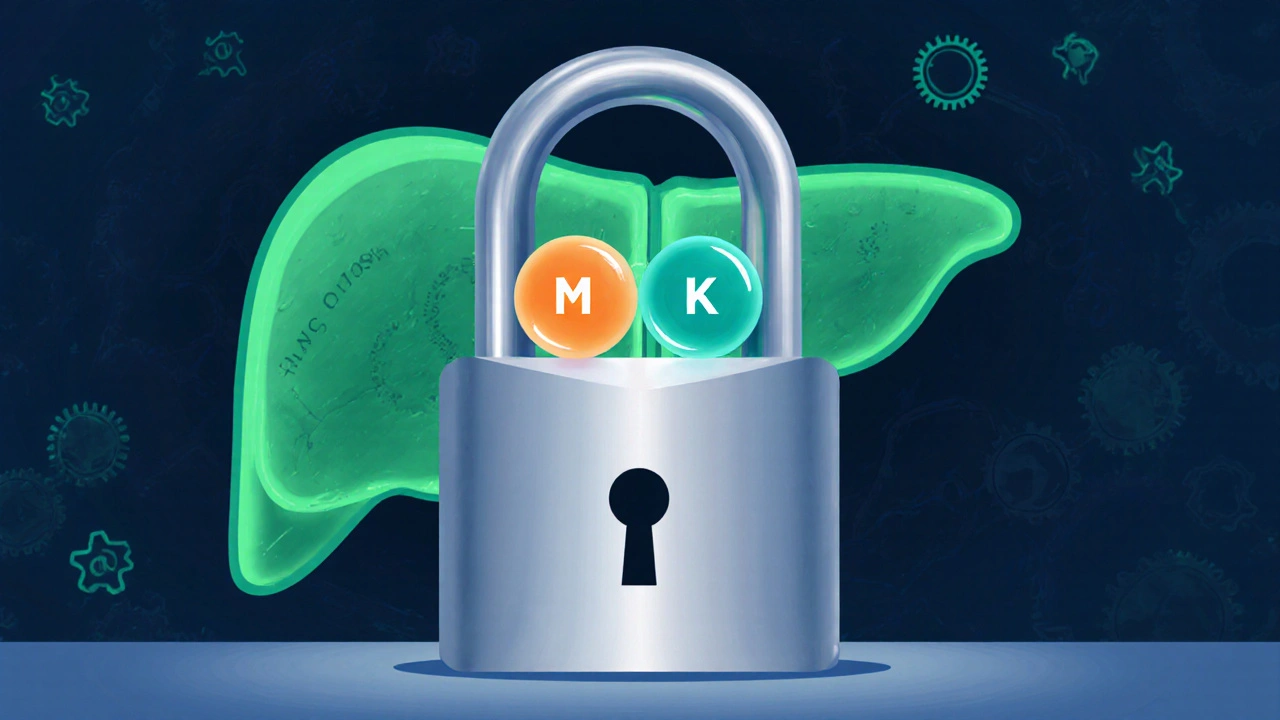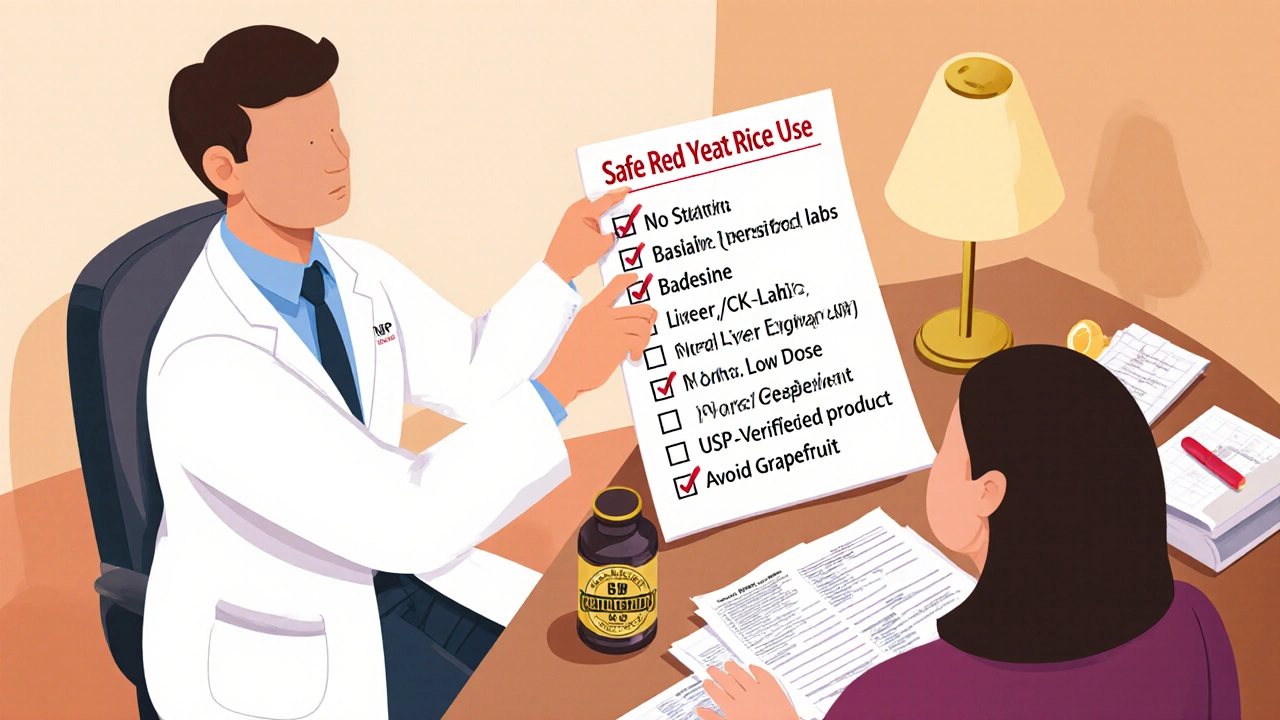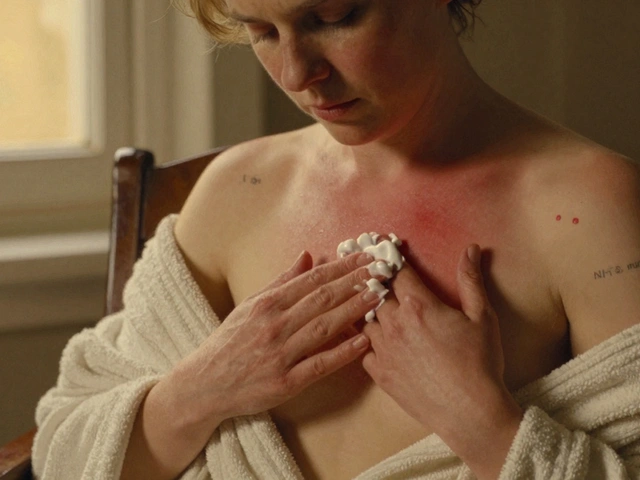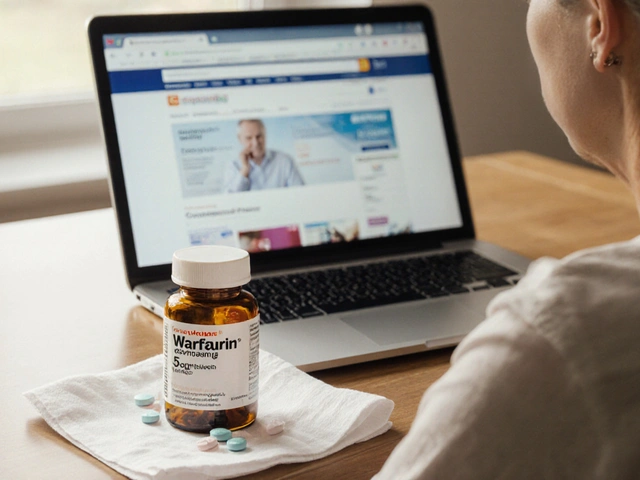Red Yeast Rice & Statin Risk Calculator
This tool helps you understand the combined risk of using red yeast rice (which contains monacolin K) with prescription statins. Both substances target the same enzyme and combining them can significantly increase the risk of muscle damage and liver problems.
Red Yeast Rice Input
Statin Input
Important: Red yeast rice contains monacolin K, which is chemically identical to the prescription statin lovastatin. Combining both products increases the risk of muscle damage, liver problems, and other serious side effects.
Imagine taking a natural supplement that promises the same cholesterol‑lowering power as a prescription drug, then adding the prescription on top. The result can be a recipe for serious muscle damage and liver trouble. That’s exactly what happens when red yeast rice is paired with statins - two agents that hit the same biochemical target at once.
Key Takeaways
- Red yeast rice (RYR) contains monacolin K, chemically identical to the statin lovastatin.
- Because RYR products vary widely in monacolin content, dosing is unpredictable.
- Combining RYR with any statin multiplies the risk of myopathy, rhabdomyolysis, and liver injury.
- Major medical bodies (AHA, ACC, Mayo Clinic) label the interaction as "Major - Use Alternative."
- Safe use of RYR requires physician oversight, low‑dose, and avoidance of concurrent statin therapy.
What Is Red Yeast Rice?
Red Yeast Rice is a fermented rice product produced by the mold Monascus purpureus. Traditional Chinese medicine has used it for centuries to improve digestion and blood flow. Modern science discovered that the fermentation process creates monacolin K, a compound identical to the first statin drug, lovastatin.
How Do Statins Work?
Statins are prescription medicines that inhibit the enzyme HMG‑CoA reductase, the key step in cholesterol synthesis. By blocking this enzyme, statins lower LDL‑cholesterol and reduce cardiovascular risk. Common statins include atorvastatin, rosuvastatin, and lovastatin, with doses ranging from 10 mg to 80 mg per day.
Why the Overlap Matters
Both RYR and statins target the same enzyme. Monacolin K from RYR binds the same active site as lovastatin, and it’s metabolized by the same liver enzyme, CYP3A4. When you add a statin to RYR, you’re essentially giving the body two doses of the same HMG‑CoA reductase inhibitor. The result is a higher systemic concentration than either product alone would produce.

Dosage Variability - The Hidden Hazard
Prescription statins have precise, FDA‑approved dosing tables. RYR, however, is sold as a dietary supplement, and label claims are inconsistent. Studies show monacolin K levels ranging from undetectable to 34 mg per gram of powder, depending on the rice strain and fermentation conditions. A typical over‑the‑counter capsule might deliver 3-10 mg of monacolin K, roughly equivalent to 10-20 mg of lovastatin, but the actual amount can differ by more than 50 % between brands.
Safety Signals: Myopathy, Rhabdomyolysis, and Liver Injury
The biggest clinical warning is muscle toxicity. The American Heart Association’s 2022 Scientific Statement explicitly advises: "Concomitant use of red yeast rice and statins should be avoided due to increased risk of myopathy and rhabdomyolysis." Case reports from Reddit, WebMD, and the FDA’s Adverse Event Reporting System describe CK levels soaring past 10,000 U/L and patients needing hospitalization for rhabdomyolysis.
Another concern is contamination with citrinin, a nephrotoxic mycotoxin found in 25-30 % of commercial RYR products. The European Food Safety Authority set a maximum safe limit of 2 ppb, yet many cheap brands exceed this threshold, adding a kidney‑damage risk on top of muscle issues.
Clinical Evidence Overview
A 2019 JACC review reported that RYR lowered LDL by 21-30 % compared with placebo - a reduction similar to low‑dose statins. However, the same review warned that the lack of standardization makes it unsuitable as an adjunct therapy. A 2023 JAMA Cardiology trial showed a 47 % drop in major adverse cardiac events for statin‑intolerant patients taking RYR monotherapy, but the protocol explicitly excluded any participant on a statin.
Real‑world data echo the same message. Analysis of 1,843 Amazon reviews found that 34 % of negative comments mentioned muscle pain when RYR was taken with a statin, and 12 % recalled a doctor’s warning about possible kidney damage.

Guidelines for Safe Use
Professional societies agree on a simple rule: never combine RYR with a statin. If a patient is interested in RYR, the clinician should:
- Confirm no current statin or other HMG‑CoA reductase inhibitor is being used.
- Order baseline liver function tests (ALT, AST) and CK levels.
- Choose a USP‑verified RYR product that guarantees 0.5 %-1 % monacolin K and < 2 ppb citrinin.
- Start with a low dose - typically 600 mg of standardized powder (≈ 1-2 mg monacolin K) once daily.
- Re‑check lipid panel after 8-12 weeks and repeat liver/CK labs at 3 months.
- Avoid grapefruit juice and other CYP3A4 inhibitors while on RYR.
Patients who cannot tolerate statins should be offered alternative prescription options first - ezetimibe, PCSK9 inhibitors, or extended‑release niacin - before resorting to a supplement with unpredictable potency.
Comparison Table: Red Yeast Rice vs. Prescription Statins
| Aspect | Red Yeast Rice (typical) | Prescription Statin (e.g., atorvastatin) |
|---|---|---|
| Active ingredient | Monacolin K (3‑10 mg per dose, variable) | Lovastatin, atorvastatin, rosuvastatin (10‑80 mg, standardized) |
| Regulatory status | Dietary supplement - FDA treats as unapproved drug if >0.0 % monacolin K | FDA‑approved medication with strict labeling |
| Dose consistency | High variability; 30‑70 % of products mislabel monacolin content | Verified by manufacturing standards; <1 % variance |
| Risk of myopathy | 3.7‑fold increase when combined with statin; alone similar to low‑dose statin | Baseline risk; increases with higher doses or drug interactions |
| Additional contaminants | Citrinin (mycotoxin) in up to 30 % of batches | None |
| Cost (US, 2024) | $15‑30 per month | $10‑20 per month for generic statins; $300+ for PCSK9 inhibitors |
Practical Checklist for Patients and Providers
- Ask every patient about supplement use - up to 45 % don’t disclose.
- Use only USP‑verified RYR products; check for citrinin testing.
- Never prescribe RYR alongside any statin, fibrate, or niacin.
- Monitor CK and liver enzymes at baseline, 3 months, then annually.
- Educate patients on signs of muscle pain, dark urine, or fatigue - these may signal rhabdomyolysis.
Bottom Line
Red yeast rice offers a tempting “natural” route for people who can’t tolerate statins, but its unpredictable monacolin K content and shared metabolism with prescription statins make concurrent use a high‑risk gamble. The safest approach is to treat RYR as a stand‑alone option, only after a physician has verified that no statin is in the patient’s regimen.
Can I take a low‑dose statin and red yeast rice together?
No. Even a low‑dose statin adds to the HMG‑CoA reductase inhibition already provided by red yeast rice, raising the chance of muscle damage. Experts label the interaction as "Major - Use Alternative."
How can I know how much monacolin K is in my red yeast rice supplement?
Look for third‑party testing results, such as USP verification or ConsumerLab.com reports. These documents list the exact monacolin K percentage and citrinin levels.
What symptoms suggest I’m developing myopathy?
Unexplained muscle aches, weakness, or dark‑colored urine are red flags. If you notice any of these, get a CK test right away.
Is citrinin testing required for every red yeast rice product?
Ideally, yes. The FDA’s 2023 warning urged manufacturers to test for citrinin, and reputable brands now list “citrinin‑free” on their labels.
What are the alternatives for statin‑intolerant patients?
Ezetimibe, PCSK9 inhibitor injections, and extended‑release niacin are FDA‑approved options that avoid the unpredictable dosing of red yeast rice.







Comments(14)